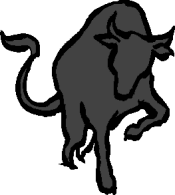

To send a message to an author, click on the author's name at the end of the article.
This Month in Ag Connection | Ag Connection - Other Issues Online
With the year end past and the March 1st farm tax deadline past, you may be breathing a sigh of relief that financial statements are done for another year. For many, the farm records and financial statements are a challenging necessity for the farm business. How well are financial statements understood and are they being used to make decisions for the farm business?
Financial statements are important for understanding how the business is doing currently and how it is performing over time. The statements can be challenging to understand. The University of Minnesota Center for Farm Financial Management has put together a website specifically for interpreting and understanding financial statements. http://ifsam.cffm.umn.edu

The warm and hot months ahead may be the perfect time to take a break at noon or in the evening to spend some time online learning more about financial statements and be prepared to put statements together later in the year. This site is excellent for learning about financial statements. The only requirement is entering your e-mail address to start. Once entered, there are several choices: balance sheet, income statement, statement of owner's equity, statement of cash flows, ratios and measures, liquidity measures, solvency measures, profitability measures, repayment capacities measures and efficiency measures. Each segment has an ag economist from the Center for Farm Financial Management explain the segment along with visuals.
The site is designed to use at your own pace. You can choose just one topic, or can enter the site numerous times and go through each topic in detail.
The Center for Farm Financial Management has a reputation of designing excellent sites for farmers that are user friendly. This particular website tool can help you be more prepared for developing your financial statements and using them to make decisions for your farm business.
Source: Mary Sobba, MU Extension Ag Business Specialist
This Month in Ag Connection | Ag Connection - Other Issues Online
There have been more reports of bed bugs in recent months so it is important that we get some background information and education out on this little pest. Bed bugs (Cimex lectylarius) are small flat reddish brown insect about ¼ inch long or less. They hide in cracks and crevices in and around the bed during the day and come out at night to feed on people asleep in bed. While not all reactions are the same, the result of their bites can be an itchy, inflamed or slightly elevated area of skin at the site of beak insertion where they feed on human blood. They are not known to carry diseases but are undesirable because of their irritating bite. Even if you have been bitten by a bedbug, you probably haven't seen them. It injects saliva that keeps the blood flowing without mouthparts remaining in the skin. Annoying bites with scratching lends itself to potential secondary infections.
Bed bugs have been living with and feeding on humans throughout history. By the 1960s we had made great strides in the reduction of bedbug incidence. Homes were more frequently sprayed for cockroaches during that time which reduced the number of several other insect pests including bed bugs. With the introduction of cockroach bait stations in the 1990s, fewer homes are sprayed. In 2004, there were 500 reported incidences of bed bugs in New York and in just 3 years the number rose to 9000. This is a national trend of infestations on the rise.
Wherever people travel, infestations are on the rise. They are hitchhikers and do not fly so they rely on human movement to transport wherever they end up. Those who travel for recreation and business should take great caution while traveling. Once transported back to your home, they are difficult to control.
Hotels are a source of many of these infestations at 37.6 % and apartments at 9.9% where they can move from room to room undetected. If you do not bring them home you will save a lot of discomfort in the long run.

Some precautions to take as you are out traveling:
At Check in
Once home: A travelers best defense is prevention.
Control
Pyrethrins and pyrethroids (usually have active ingredients ending in -thrin)
that include bed bugs on the label can be used for these treatments. Do not
use bedding until it is thoroughly dry. Read and follow all label directions
when using these products.
Thoroughly clean all bedding, mattresses, and pillows. Lightly but thoroughly mist all cracks and crevices in the bed frame, springs, slats and mattress with an aerosol insecticide. Do not treat the entire surface of the mattress; focus on the creases around the edges and buttons. Treat all crevices in the infested area, especially around doors, windows, picture frames, baseboards, etc. Bat bugs or swallow bugs in the attic and wall voids can be treated by a light but thorough application of a suitable insecticide to the infested areas. For more information refer to MU Extension guide sheet g7396 "Occasional Biting Pests".
Source: Todd Lorenz, MU Extension Agronomy Specialist
This Month in Ag Connection | Ag Connection - Other Issues Online
The economic threshold (ET) is the pest density or level of crop injury at which controls should be applied to prevent an increasing pest population from reaching the economic injury level. The ET represents a pest density lower than that of the Economic injury level (EIL) so that the producer has time to implement the control measure before the EIL is reached. The ET is often set arbitrarily at 80 percent of the EIL to buffer the producer from preventable economic yield loss. This definition came from the MU Extension IPM1006 available online at http://extension.missouri.edu/explorepdf/agguides/pests/ipm1006.pdf
The following are ET's for early-season insects in several crops:

Aphids in Wheat - 50 or more per linear foot of row during the seedling stage, 100 or more during the 3- to 6-inch stage, and 300 or more during the 6- to 10-inch stage. (March through May)
Alfalfa Weevil - One or more larvae per stem. (Through first cutting)
True Armyworm in Grass Pastures or Wheat - 4 or more half-grown or larger larvae per square foot. (April through end of June)
True Armyworm in Corn - 25% or more of corn seedlings significantly damaged through foliage feeding by larvae. (April through end of June)
Black Cutworm in Corn - 2-4 percent of corn seedlings cut below ground and 6-8 percent of seedlings fed upon or cut above ground. (March-July)
Black Cutworm in Soybean - 20 percent of plants cut, plant stand gaps are greater than 12 inches, and live larvae are present. (April-July)
European Corn Borer - 50 percent of whorl-stage plants have damaged foliage and live larvae are present or 50 percent of later-stage plants infested with larvae and egg masses above and below ear. (May through August)
Cereal Leaf Beetle in Wheat - One or more larvae per plant stem. (April through June)
Source: Joni Harper, MU Extension Agronomy Specialist
This Month in Ag Connection | Ag Connection - Other Issues Online
Many cow-calf producers purchase new bulls in March and April. Managing these young bulls between now and the beginning of the breeding season is critical to their longevity in your herd. My colleague, Chris Zumbrunnen in Milan, wrote a newsletter article on bull management. Below are a few ideas from his article.
A large number of young bulls have been in feeding programs where they have been fed to gain 2 to 4 pounds per day from weaning to sale day. It is important to keep young bulls gaining about 2 pounds per day from the time they arrive on your place until you turn them in with the cows. They are still growing and maturing and need extra energy reserves going into the breeding season.

A bull, regardless of age, should be in a body condition score of 6 prior to the start of the breeding season. Don't forget about bulls after you turn them in with the cows either. You may need to provide some supplement in the pasture to keep them from loosing too much condition.
Pay attention to feet and leg problems. Long or curled hooves could be a result of nutrition, genetics or a combination of the two. Bulls with this problem may not stay too long in the herd. Bulls need to be able to travel freely. A bull walking on smooth, level ground should put his rear hoof down in the track left by the front hoof.
Make sure you know what diseases the bulls have been vaccinated against. They should be vaccinated against both respiratory and reproductive diseases. Also check on the parasite control and do that if necessary.
Your bulls should all pass a breeding soundness exam. This will ensure they are able to do the job you bought them to do. Be sure the bull is producing adequate sperm with high motility and does not have a large number of abnormal cells.
If problems are detected, it is still not too late to purchase a new bull, but time is beginning to get short. Avoid the temptation to just get a bull to "settle the cows". Much of the financial health of your business depends on getting as many pounds of calf sold from your farm as possible. Poor performing bulls or bulls with poor EPD's are a liability that most producers can't afford.
If you have questions or would like more information about bull management, contact Gene Schmitz, Livestock Specialist at (660) 438-5012.
Source: Chris Zumbrunnen, MU Extension Livestock Specialist and Gene Schmitz, MU Extension Livestock Specialist
This Month in Ag Connection | Ag Connection - Other Issues Online
Publishing Information
Ag Connection is published monthly for Northeast and Central areas of Missouri producers and is supported by the University of Missouri Extension, the Missouri Agricultural Experiment Station, and the MU College of Agriculture, Food and Natural Resources. Managing Editor: Mary Sobba.